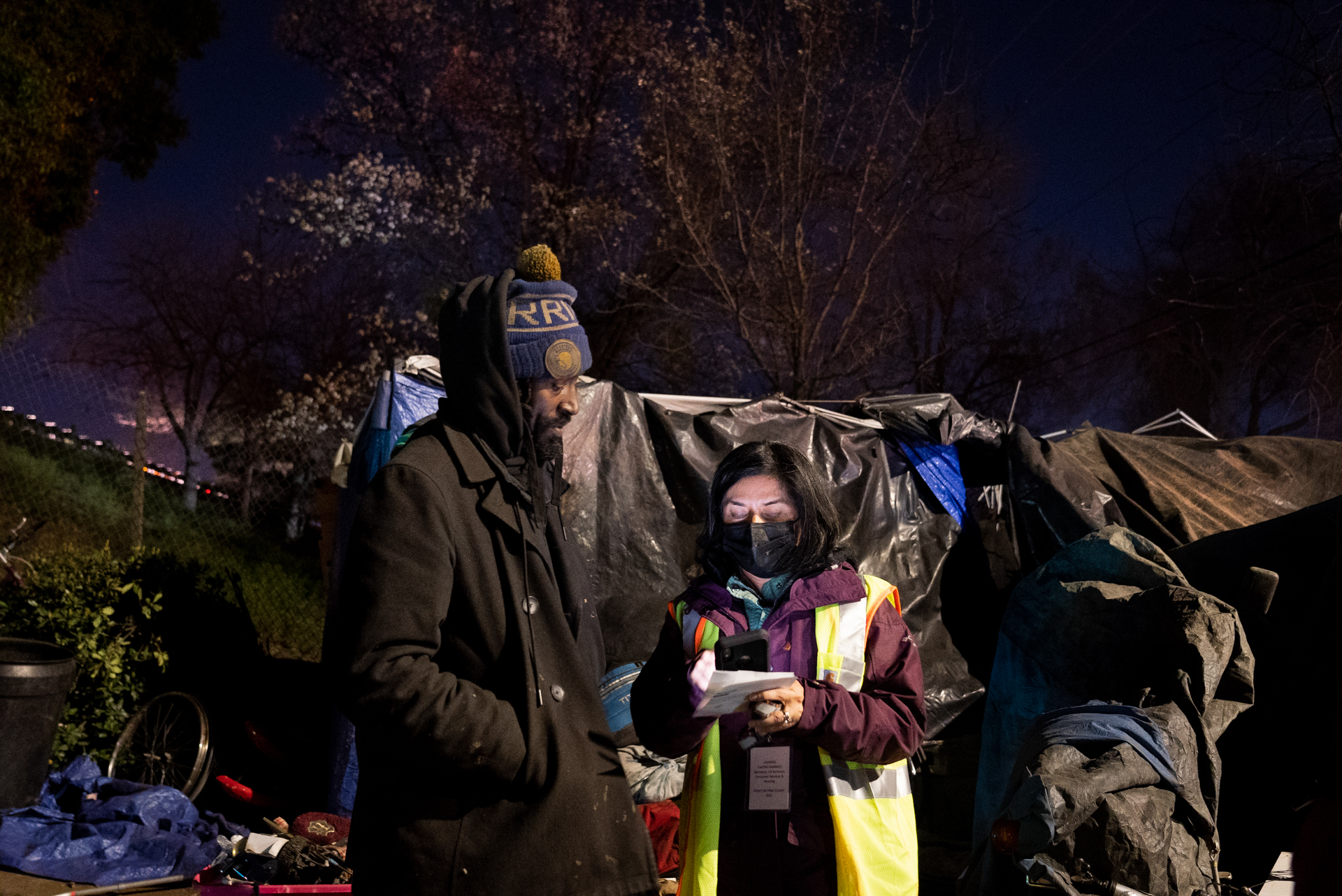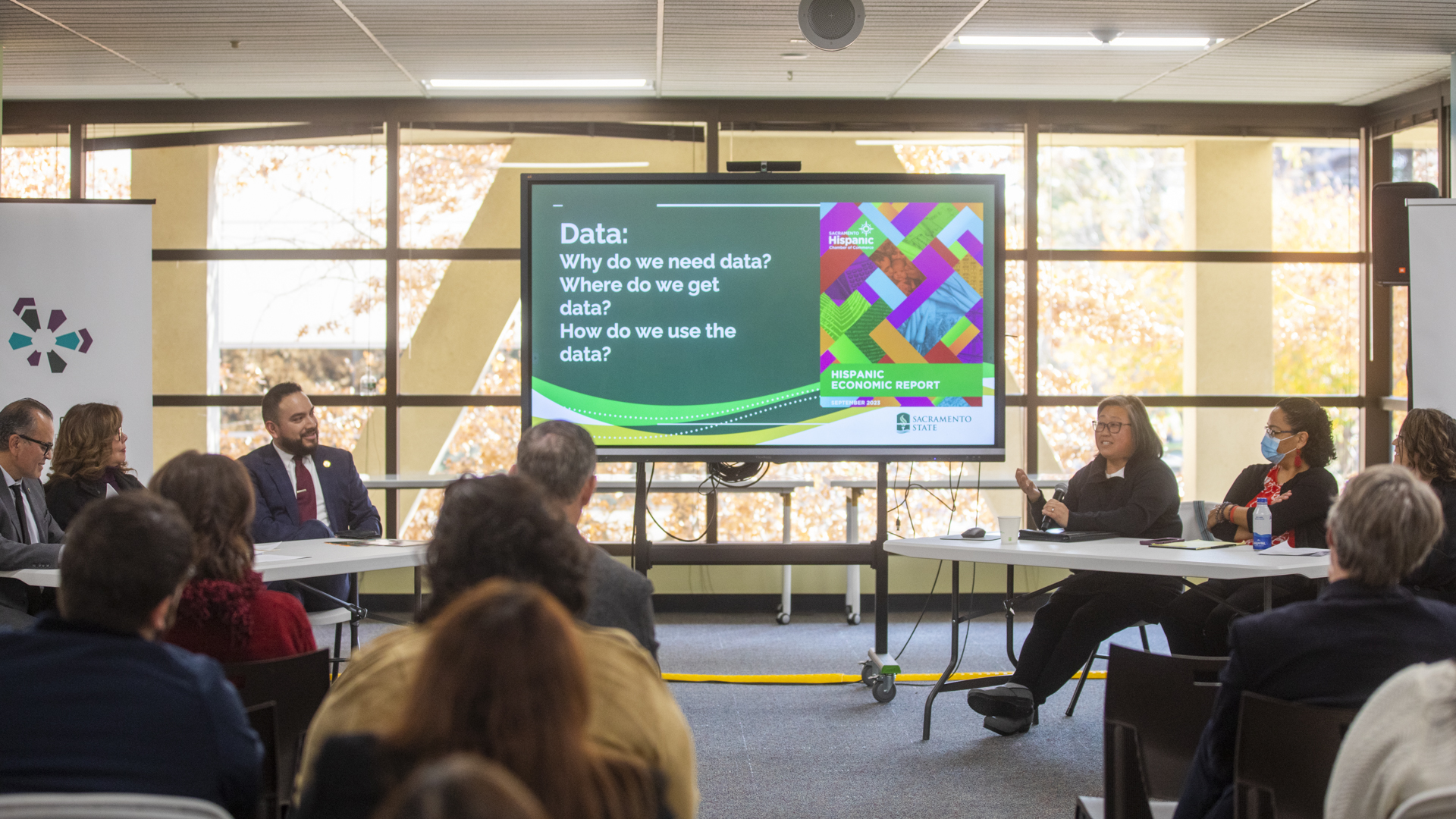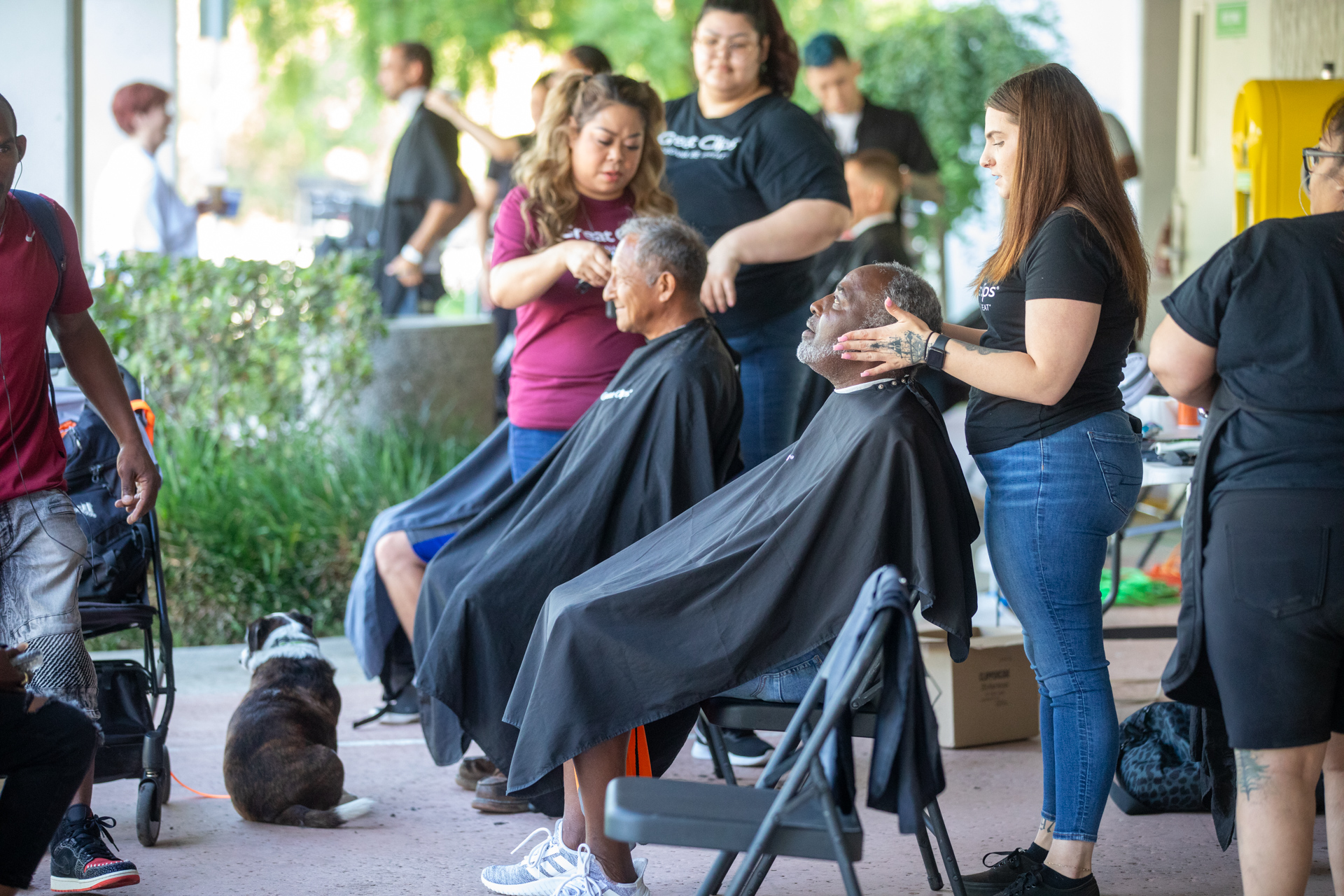Story Content
Sac State symposium explores strategies for addressing homelessness crisis

December 13, 2023
Sacramento State held a spirited community discussion on Dec. 12 about one of the region’s most vexing and divisive issues: homelessness.
Faculty, students, advocates, and unhoused individuals took part in a daylong symposium that examined the causes of homelessness and brainstormed strategies for turning around the lives of an increasingly visible population of people.
During the event, held at the Carlsen Center for Innovation and Entrepreneurship, more than 100 participants learned about proposals for local transitional housing communities, and shared information about helping homeless people gain access to mental health and other services.
The University’s School of Social Work and Department of Design hosted the discussion.
Solving homelessness requires a delicate balance between “protecting the rights of people living outdoors, and sanitation and public safety concerns” associated with encampments, said Social Work Professor Arturo Baiocchi, who has conducted extensive research on the subject.
Homeless camps have been linked to contamination of waterways, garbage pileups, drug and alcohol abuse, and crime, among other issues.
“People lose everything in these sweeps. They lose every single belonging that they have. It’s devastating.” -- Angela Hassell, executive director of Sacramento’s Loaves & Fishes homeless program
The challenge is rapidly growing: A 2022 report from Sac State faculty, including Baiocchi, revealed that an estimated 9,278 people were without shelter in Sacramento County, an increase of 67% since 2019. Data for the report was gathered over two nights in February during the region’s annual “Point in Time” count.
“The problem is not going away until we have more infrastructure and permanent housing,” said Jessica Bruce, chief program officer for Los Angeles-based City Net Homeless Services. But proposed homeless housing programs often face sharp opposition from neighbors and can take years to open, speakers pointed out.
In the meantime, homeless people have few options other than temporary shelters, many of which have long waiting lists and rules that some find too restrictive.
The city of Sacramento has responded to complaints about large homeless camps with regular law enforcement “sweeps” to clear the areas, a controversial practice that advocates call inhumane and ineffective.
“People lose everything in these sweeps,” said Angela Hassell, executive director of Sacramento’s Loaves & Fishes homeless program and a Sac State alum. “They lose every single belonging that they have,” sometimes including wheelchairs, medications, and important documents. “It’s devastating.”
The city has said it is obligated to respond to complaints about the camps, and tries to connect people with services. But advocates counter that homeless people often just relocate to other areas.
Participants in Tuesday’s conference also learned about more than a dozen proposed or active homeless housing programs in the Sacramento area. One is designed for graduates of Women’s Empowerment, an education and skills program. Another provides emergency housing for youth.
Sharon Jones and Joyce Williams, who both lived outdoors in tents for more than a decade, told the audience about Camp Resolution in north Sacramento. The women founded the encampment, in which 50 people live legally in trailers on land leased to them by the city at a nominal cost, about a year ago.
Sacramento County’s district attorney is threatening to file criminal charges over the encampment, which is governed by its residents and prohibits drug and alcohol use.
“It’s not perfect, but it’s our community,” said Jones. “Every day is a fight, but it’s worth it.” Eventually, its residents hope to move into permanent housing, she added.
While some have called for establishing large homeless communities in far-flung locations, such as near the airport, Baiocchi and others advocate building smaller ones in urban areas close to transportation, grocery stores, and other services.
The approach allows previously unhoused people to interact organically with their neighbors, he said.
“If we make homelessness invisible,” Baiocchi said, “it’s only going to worsen the problem.”
Editor's Pick
Media Resources
Faculty/Staff Resources
Looking for a Faculty Expert?
Contact University Communications
(916) 217-8366
communications@csus.edu


